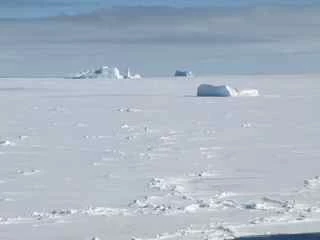Tom Sharpe's Antarctic Diary 2011-12-06
, 6 December 2011
Friday 18 November
It’s just over a hundred years since Captain Scott’s ship, the Terra Nova, sailed from Cardiff for Antarctica.
Scott designated Cardiff the home port of his ship because of the support his expedition received from Cardiff and South Wales. Last year we put together a little exhibition bringing together a range of objects from our collections to commemorate the departure of the expedition on 15 June 1910.
On 17 January 1912, Scott and his four companions reached the South Pole only to find that he had been beaten, by a month, by a Norwegian team led by Roald Amundsen. The fate of Scott’s Polar Party is well-known: all five died on the return journey. But there was much more to Scott’s expedition than the attempt on the Pole. It was a major scientific expedition, studying the geology, biology, meteorology and physics of Antarctica and its glaciers.
We’re planning another exhibition, , opening in January 2012, to look at the Welsh links with Scott’s expedition and the scientific work undertaken on it. We’re part of a national series of exhibitions and events to mark the centenary of the expedition. I’ve been working on this exhibition for some months now, but about four weeks ago my preparations took an exciting turn when I was invited to join a trip to the Ross Sea in Antarctica, with the intention of visiting Scott’s expedition base hut.
We sailed a week ago from Lyttleton in the South Island of New Zealand, the same port from which Scott sailed in 1910. Two days ago, we entered the pack ice of the Ross Sea. Each winter, the continent of Antarctica doubles in size as the sea around it freezes. I’m on a Russian icebreaker. We’ve been following leads - strips of open water between the ice floes - and where necessary forcing our way through the thicker floes. We do this by ramming into the ice, then reversing a few hundred metres before ploughing full ahead into the floe and hopefully breaking through. Breaking our way through the ice feels very much like being in the central seats of a 747 in bad turbulence, but much noisier.
We’ve been making good progress, initially through thin first year ice (formed this last winter) and then into an area of open water called a polynya. But today we’ve slowed. The pack ice we’re in now is much thicker, over a metre thick in places. This is multi-year ice, built up over several winters. At 70oS, we’re now well south of the Antarctic Circle and in continuous daylight. Here the sun will not set for some months.
Some of the ice floes are forced together by the pressure of tides and currents and today we found ourselves caught between two floes. This pressure caused the floes to close behind us, and for a while we were trapped in the ice. Even with all engines on full power, we could neither advance or reverse. But just as we were beginning to decide who we would eat first, the ice floes parted and we were released from their grip!
All around us there is nothing but sea ice to the horizon in all directions. The ice surface is not smooth, but broken by the jagged lines of pressure ridges and the occasional enormous tabular iceberg frozen into the pack ice. It looks lifeless. There are no other human beings as far as the eye can see. But life is here. This morning an orca, a killer whale, popped up to take a look at us; minke whales show their fins through the open water of the leads; and crabeater seals bask on the ice floes. Clusters of Adelie penguins rush around on the ice while, in contrast, a stately Emperor penguin stands tall and imperious on the edge of a floe.
There is no environment on earth to compare.

